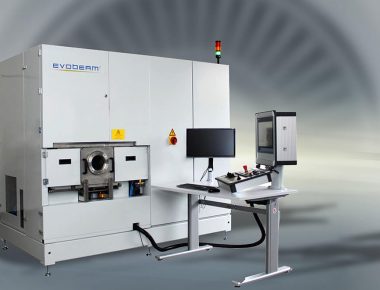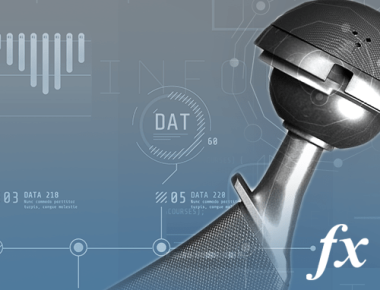
Laser in Vacuum
Fast, very precise and applicable for magnetic materials
LASER is the acronym for “Light Amplification by Stimulated Emission of Radiation”. A laser or laser gun is a device that emits coherent light or coherent stream of photons, which refers to spatial coherence or temporal coherence. The first laser was built in 1960 by Theodore M. Maiman at Hughes Research Laboratories.
Laser Beam Machining (LBM) is a non-conventional machining fabrication process. The stream of photons is directed towards the work piece for machining.
Then heating, melting and vaporizing of the material take place due to impinge of photons. This applies for metallic and non-metallic materials.
By now, mostly brilliant solid-state fiber lasers are used as beam source, due to their advantages regarding energy-efficiency and flexibility.
Welding with fiber lasers at atmospheric pressure causes a metal vapor plume above the keyhole that uncontrollably impacts the molten pool and causes spatter. Neither vapor plume nor spatter occur in a vacuum.
The combination of vacuum and fiber laser offers the following advantages:
- Better energy coupling requires lower beam power than in non-vacuum conditions
- Very good results in conditionally weldable materials
- A rapid 10-100mbar pre-vacuum is sufficient for steels
- Standard laser sources of competing producers available
Features and benefits
- Precise control of beam properties
- Non-contact process and wear-free tooling
- Vacuum conditions significantly improve metallurgical properties of machined area
- Resilience against magnetism
- Post-machining cleaning of parts significantly reduced or avoided
Laser in Vacuum - Technology
Laser in Vacuum Machining can be applied for basically all materials
Additional features and benefits
- High power density up to 106/cm2 at the focal spot:
Rapid heating above the melting point enables high speeds and deep penetrations.
- LB can be applied under atmospheric pressure:
No mechanical limitations by working chamber. Easy to automate with robots and versatile for varying geometries. Beneficial for machining or welding of bigger parts.
- Wide scope of possibilities in one machining run:
Multi-process and surface treatment applicable.
- No X-radiation as compared to Electron Beam:
Safety measures for fiber lasers can be even more demanding.
- Wide range of applications in one machine possible:
High machine utlization and wide range of workpiece portfolio.
- Magnetic materials can be welded.
- Ample scope of systems:
Available for fabrication one-off components, indexing machines and production cells for production of small to large series. Furthermore, strip machining systems for continuous machining available.
- Usage of fiber lasers as source:
Fiber laser sources significantly improve energy efficiency and the energy density at the focal spot as compared to CO2 lasers in laser welding and related applications. Up to 100 kW lasers for industrial purposes are already available.
Applying laser welding in vacuum degases the molten pool which improves the metallurgical properties and thus increases the quality and the penetration depths of the welds.
Applications
Laser in Vacuum – Systems & Options
Versatile range of laser in vacuum machining solutions supported by our scope of services
Laser in Vacuum - Additional information
Features and benefits – details
- Precise control of beam properties:
Full control of energy density, focus, and location enables high machining speed combined with minimal heat input on work piece, and very low warpage and distortion. With laser welding in a vacuum, precise and narrow weld seams can be achieved. Overall, this improves the quality of the weld.
- Non-contact process and wear-free tooling:
Particularly clean process environment, especially when applying vacuum conditions. - Vacuum conditions significantly improve metallurgical properties of machined area:
Virtually no shielding gas as a consumable is required. Positive impact on metallurgical properties of molten material. In case of welding, vacuum significantly increases the weld penetration depth without increasing the beam power. - Resilience against magnetism:
LBM is suitable for magnetic materials. Clamping and positioning of the workpiece is possible with magnetic devices. Even induction can heat up the workpiece during welding or other applications.
- Post-process cleaning of parts significantly reduced or avoided:
Reduction or avoidance of production process steps shortens the process chain and reduces complexity.
Challenges of laser beam machining
In order to optimally utilize the laser beam machining capabilities, it is essential to also consider the potential downsides of this technology.
- Optical system with physical lenses:
The deflection of the photons has an inertia due to the physical set up of the mirror system. Furthermore, the lens system can be polluted due to vapour. This may reduce the beam energy at the focal spot. That can be critical, especially in case of a welding process. In addition, the lens system requires consistent cooling to maintain the defined optical properties laser. - Limited flexibility of focus level range:
For continuous adjustment of the focus level, an additional linear mechanical axis has to be applied. - Reflective materials:
Reflection may impact and damage the lens system. Some automated systems measure the back-reflection is measured and shut off the laser at critical values. Green or blue diode lasers could further improve laser weldability.

